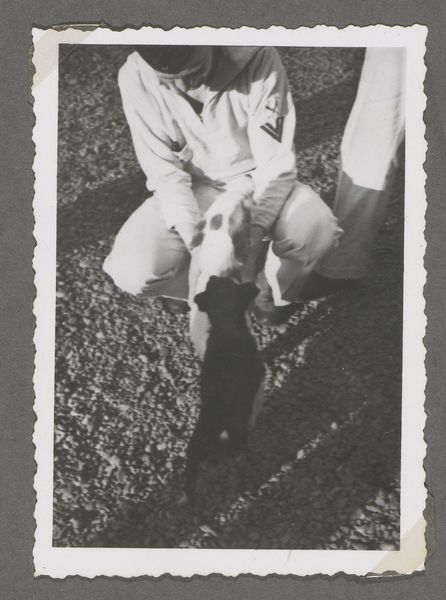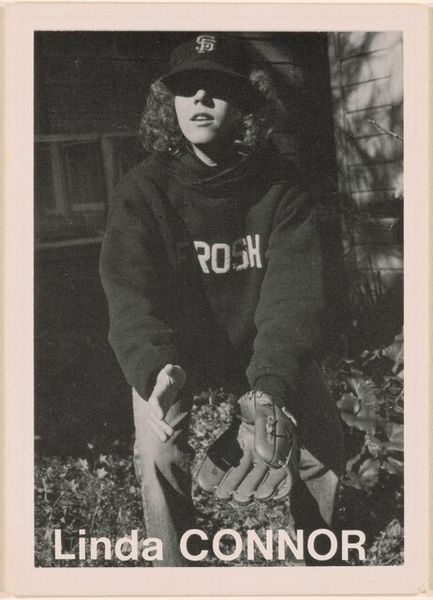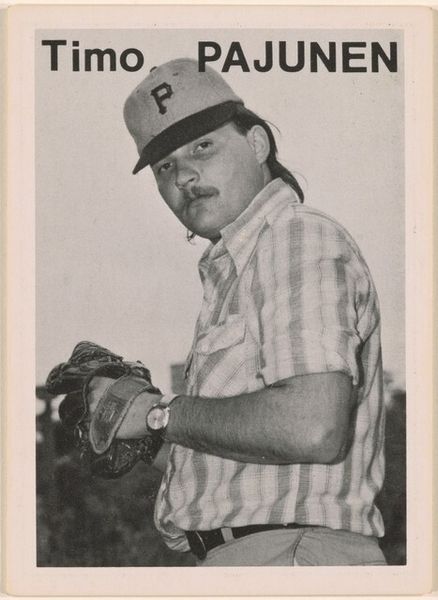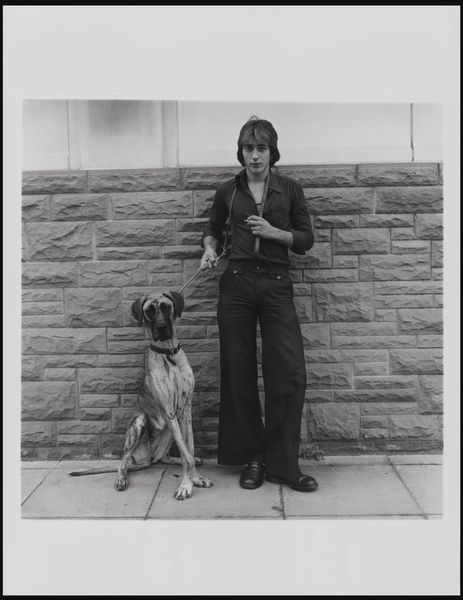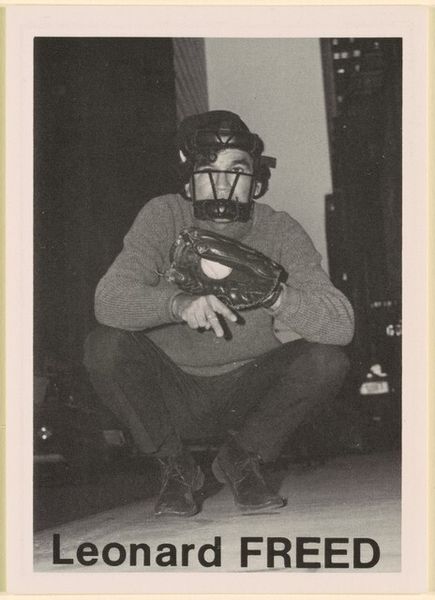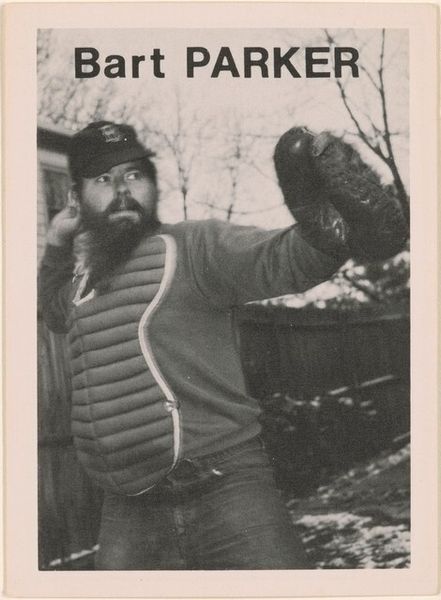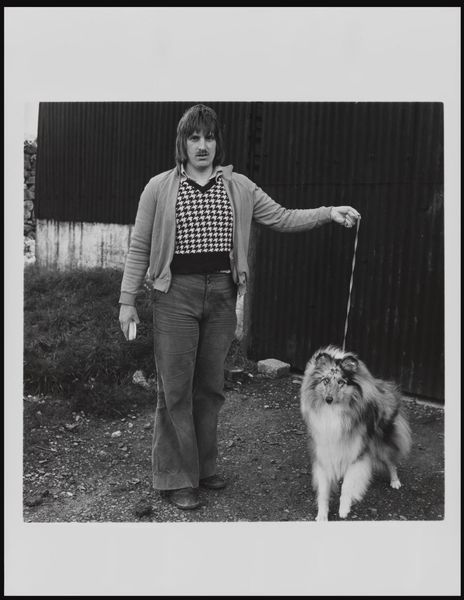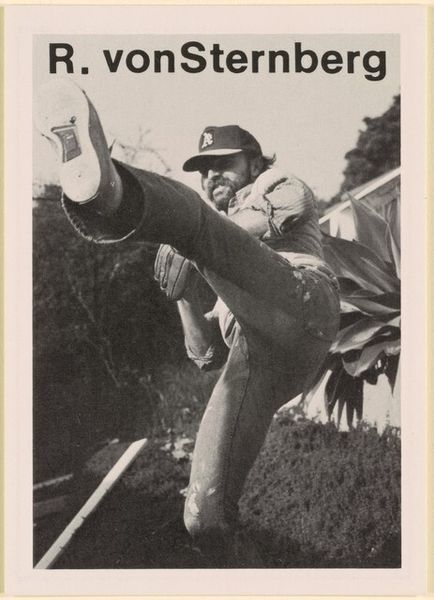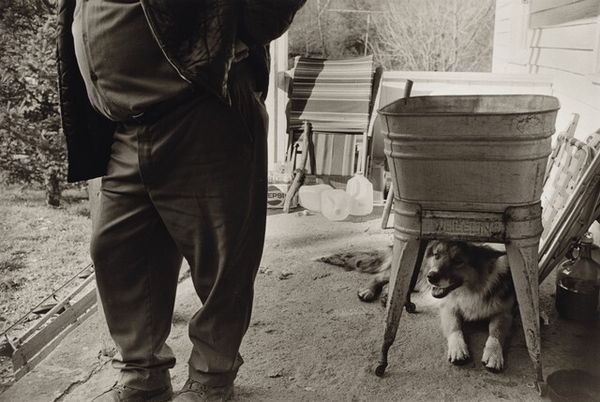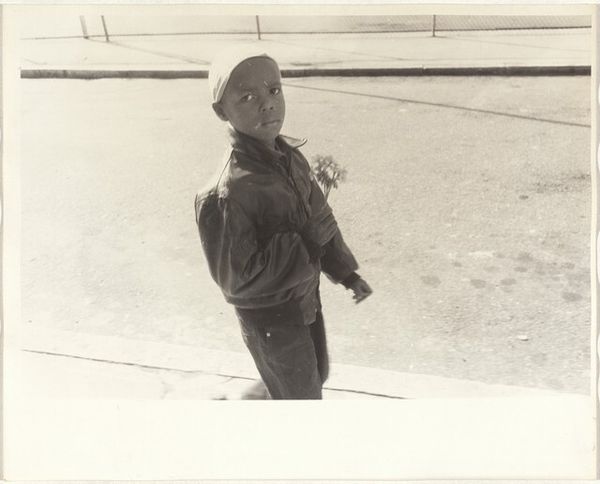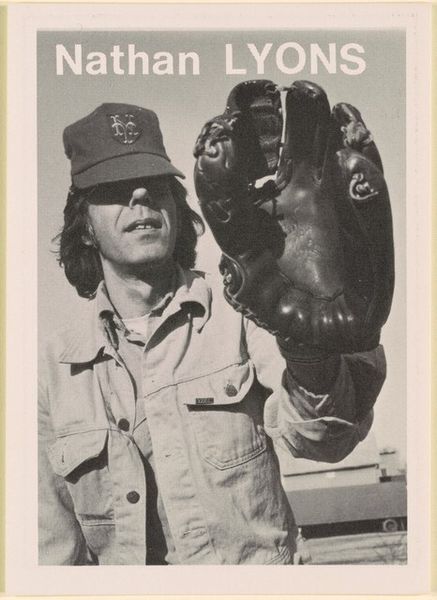
print, photography, gelatin-silver-print
#
print photography
# print
#
street-photography
#
photography
#
historical photography
#
gelatin-silver-print
#
modernism
Dimensions: image: 8 × 5.5 cm (3 1/8 × 2 3/16 in.) sheet: 8.9 × 6.3 cm (3 1/2 × 2 1/2 in.)
Copyright: National Gallery of Art: CC0 1.0
Curator: Welcome. We are looking at Mike Mandel's photograph, "Linda Parry," taken in 1975. It is a gelatin-silver print. Editor: My first impression is one of stillness despite the athletic pose. The monochrome tones emphasize a kind of ordinary grit, an everyday aesthetic I find appealing. Curator: Note the tension between the apparent spontaneity and the formal, almost structured, pose. Linda Parry is presented frontally, in a crouching position that creates a dynamic triangular form. Editor: This begs the question of labor and leisure. Gelatin-silver prints, like this, highlight the materiality of photography as a process; the work isn’t only in capturing the image, but in the darkroom manipulations, the development of tones. This physicality contrasts with the seeming casualness of the baseball imagery. Who was Linda Parry? Is she a sports player, an employee of the city? Curator: The composition draws attention to contrasts: her soft expression against the hardened glove, the decorative animal pattern of her shirt playing off the utilitarian hat. This contrast heightens our focus to those textures, tones, and details. Editor: Contextually, the photograph fits into the broader artistic experiments of the 1970s, where artists began to dissect the cultural impact of media. Street photography from that period explores urban reality while questioning notions of authenticity. It is less about idealizing moments, and more about documenting daily experiences. I imagine Mandel on location finding these gritty places and figures, asking everyday people to sit for these shots. Curator: In that sense, you have raised the subject of social inquiry embedded within the photograph, beyond the purely visual components of texture and structure and that helps contextualize Mandel’s overall aesthetic intent. Editor: Exactly, by considering both, we are understanding both the construction and the content. I think it makes us reflect on who takes photographs and why. Curator: I agree. It compels the viewer to ask questions about representation. Editor: A photo of a regular, and by making art, Mandel elevated both Linda Parry and his vision.
Comments
No comments
Be the first to comment and join the conversation on the ultimate creative platform.
